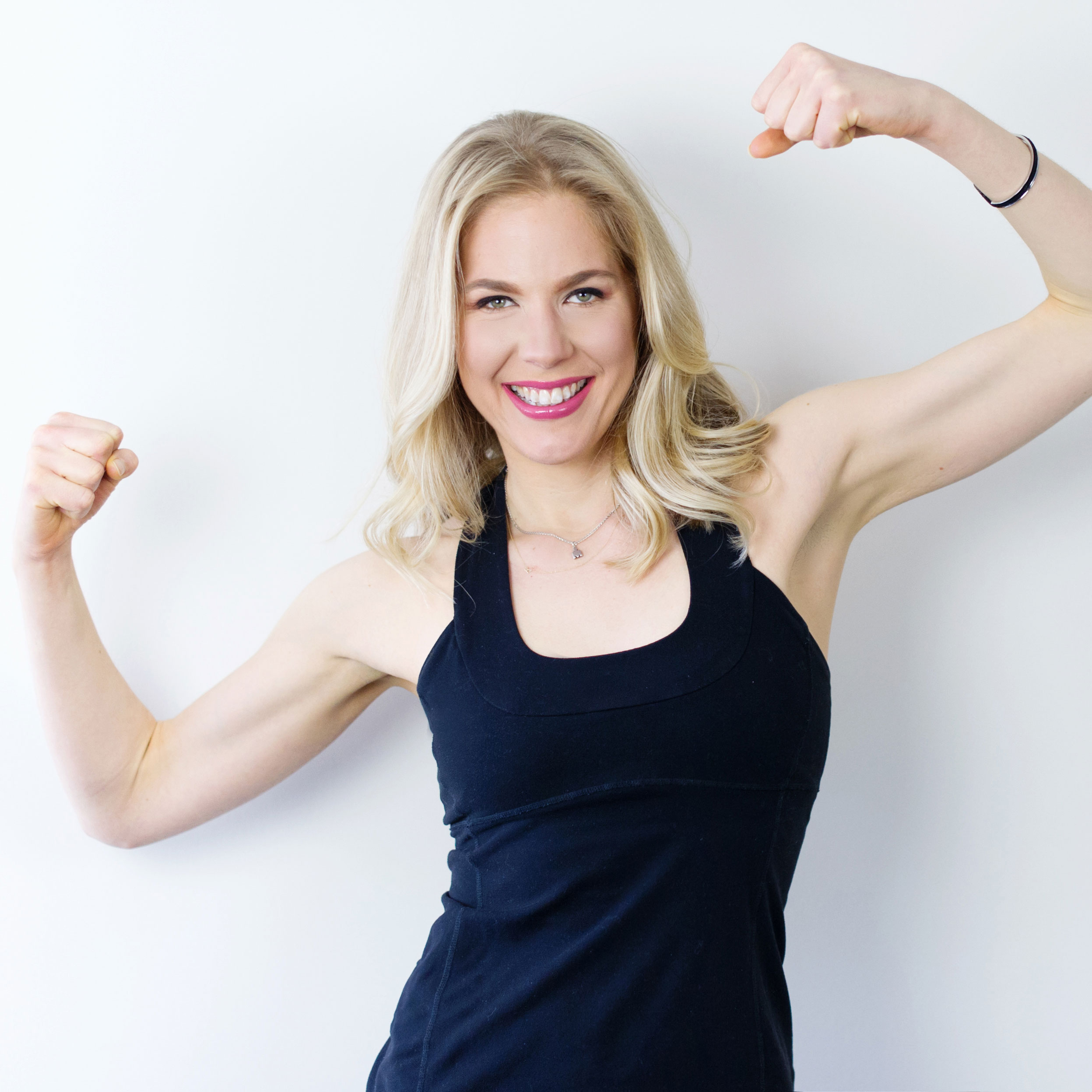Re-Think “Fit”

Fit is a word that is, unfortunately, too often thrown around as if there were one monolithic version of fit — as if “fit” will look the same on everyone. The problem with the current wide-spread, typically subconscious, one-size-fits-all interpretation of fitness is that it sets us up for failure; it is, at best, unrealistic and, at worst, highly unmotivating. A stereotypically fit person drinks protein shakes, has washboard abs, and trains daily. Why even start working out when the image of what you are trying to become seems so unachievable? This unattainable version of fit becomes yet another way we self-sabotage, indulge in false either-or choices, and let ourselves off the hook. In short, we don’t change or evolve, and we spiral further down the rabbit hole of “I always fail. I am doomed to be unhealthy. Why even try?”
To create the fittest future you, you have to first understand how “fit” will look on you. Who is this future you? Now, your fit is not just your jean size or how many push-ups you can do. Your fit is the interconnection between the activities that work best for your body, your relationship with your body, your inner sense of worth, your history, your goals, and how your understanding of health and wellness plays out — how it fits — on your body. Fit not only looks different on everyone, but it will also look different on the same person as they age or as their life realities change. In my 20s I completed a full Ironman, eight half Ironmans, and 10 marathons. I thrived on endurance events. Now I gravitate toward shorter runs and Pilates.
What it boils down to is this: There is no “one-sized solution.” You can’t fit a square peg into a round hole. The trick to adopting a healthier lifestyle is to “match the plan to the person versus trying to fit the person into the plan”; create an individualized plan based on the realistic version of who you want your fittest future self to be.
Tips on creating a plan to match your version of fit
Create a unique plan tailored to YOU!
Instead of trying to find the perfect diet, workout, and mindset program to follow, create something — your “mix” — tailored to you. Become a “mix maker.” The basic concept of “mix making” is that, not only are there pros and cons to every diet, workout, and motivational program available, the pros and cons are relative to the person creating the mix. What is considered a “pro” for you will depend on your individual history, genetics, goals, etc. — your “pro” might be your best friend’s “con.” Parse out the elements from various programs that work for you to create your mix. Maybe “get a fitness buddy” or “work out at home” or the “no snacking” element of intermittent fasting resonate for you. If so, great. Use them. If not, great. Leave them.
A positive element of the “mix making” process is that past experiences are no longer something to be frustrated about; rather, they become data — information you can learn from. If you know an element of a diet or a type of workout absolutely didn’t work for you, don’t add that element to your mix. If you loved a particular element of a diet or a past activity, say, playing a sport or dancing at clubs, consider joining a team or taking dance classes.
Ditch perfectionism
There will never be the perfect week or day to start being healthy. Too many of us buy into the mindset of, “If I can’t do a perfect workout or eat a perfect diet, I might as well not even try.” Something is ALWAYS better than nothing. The mediocre workout you do regularly is better than the perfect workout you never do. A 20-minute workout is better than no workout. Just start.
Replace fitness “wishes” with fitness goals
Too many of us wish for change without a concrete plan to make it happen. Sure, start with a “fitness wish” — I want to lose X amount of weight or be able to lift X pounds — but turn the wish into a reality by establishing realistic, safe, meaningful, and sustainable long- and short-term goals.
Establish two or three realistic goals and write them down. Make sure your goals reflect how much time and energy you actually have (not how much you want to have), your finances, and your equipment. Figure out in advance the WHAT, WHERE, WHEN, and HOW of your workout plan. WHERE and WHEN will you work out? Will you join a gym or a running group, set up a home gym, or play a sport? WHAT will you do? If you love being outside, research the local ravine system or find a nature walking group. If you love group sports, find a convenient team to join. Set specific timelines. Want to lose weight? How much and by when? Break the goal down into how much per week. What accommodations do you need to make? Do you need to rearrange who will drive the kids to school to fit in workouts? Do you need to download fitness podcasts so you can train in your living room? A specific, realistic plan sets you up for success.
Main take-away
Thrive in your own fitness lane. Don’t waste your life wanting to look like a celebrity or to be a waif if you don’t have that physique. Aim to be the best and healthiest version of you that you can be. Consistency is KEY, so find something that you enjoy, or at least that you don’t hate, and something that is convenient so that you can do it consistently. The mediocre plan you do consistently is much better than the “best” plan you never do. The benefits of anything are moot if you don’t actually do it.

